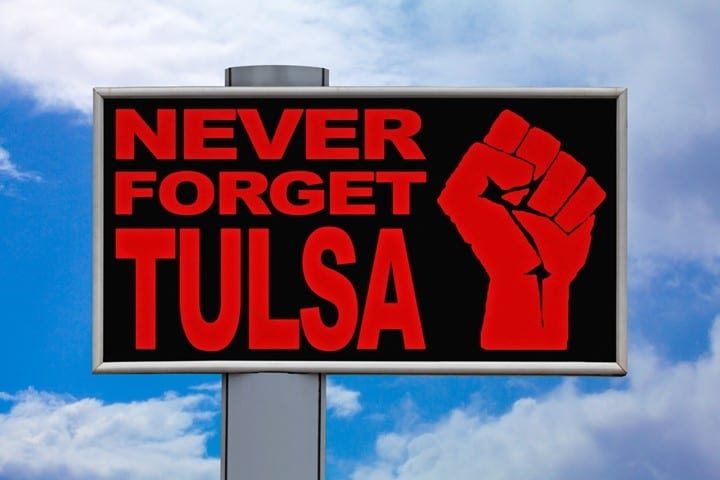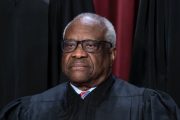
One hundred years ago, over a two-day period, from May 31 through June 1, Greenwood — the unusually prosperous “black section” of Tulsa — was virtually destroyed in what has been variously called the Tulsa Race Riot, Tulsa Race War, or more recently, the Tulsa Race Massacre. President Joe Biden is expected to visit Tulsa next week on June 1 to commemorate the 100th anniversary of the event.
With Stacey Abrams — a highly partisan Democrat from Georgia — expected to deliver a keynote speech at events this weekend, Biden’s talk will likely continue the politicization of the tragic incidents that took place a century ago. Already, the Tulsa Race Massacre Commission, established several years ago by the Oklahoma Legislature, has been used to attack two Republican officeholders in the state — U.S. Senator James Lankford and Governor Kevin Stitt.
A recent article in National Geographic History magazine is typical of a myth used in an effort to advance a progressive political agenda — that the horrific events in Tulsa in 1921 were “erased” from the history books. This is ironic, coming from some of the same people who want to destroy historical monuments of all sorts across the country and suppress intellectual discussion of historical events by smearing anyone who disagrees with their left-wing viewpoint as “racist.”
In the National Geographic History article, Tucker Toole wrote, “Reports of the Tulsa massacre were intentionally omitted from American history until its hundredth anniversary neared.”
This assertion — that the infamous Tulsa Race Riot went down some sort of Orwellian “memory hole” until just the last few years — is untenable. The Oklahoma Legislature established a commission in 1997, nearly a quarter of a century ago, to investigate what actually happened in 1921.
I know that when I was a history major in college in Oklahoma in the mid-1970s, the Oklahoma History professor talked at length about what was known about the episode. When I graduated, my first teaching job included an assignment to teach Oklahoma history to ninth graders. The textbook the school provided for use in the course was Harlow’s Oklahoma History: Sixth Edition by Arrell M. Gibson, a professor of history at the University of Oklahoma. I still have a copy of the book, which has a 1972 copyright date.
In the book, Gibson had this to say: “In Tulsa a black youth was arrested during 1921 on a charge of molesting a white girl. A mob of whites gathered at the jail apparently intent on lynching the accused youth. Violence flared when a countering mob of blacks sought to protect the prisoner. The conflict spread to the black section of Tulsa [Greenwood] where fire gutted two miles of homes and businesses. Seventy blacks and nine whites died in the rioting, and order was restored only by the entry of the National Guard and the application of martial law.”
From that paragraph, one can readily establish that the event was not “omitted.” That was 1972, which is nearly a half-century ago, and one can assume that since this book was the sixth edition of Gibson’s history book, he most likely covered the event in previous editions. In fact, in another Oklahoma history book written by Gibson, Oklahoma: A History of Five Centuries, with a copyright date of 1965, he gives more detailed coverage of the event. This book appears intended for an older audience, perhaps college students, but the wording is similar.
In another book I have in my library (I now teach Oklahoma History, among other subjects, in an Oklahoma college), Oklahoma: A History of the Sooner State, by Edwin C. McReynolds, this one with a 1954 copyright date, the Tulsa Race Massacre is covered as well. In this book, McReynolds noted, “The crowd of whites broke into hardware and sporting-goods stores, helped themselves to guns and ammunition, and became an uncontrollable mob.” After providing many more details of the event, he concluded his discussion with the words, “citizens of Tulsa were heartily ashamed of the entire affair.”
It should go without saying that Oklahoma history books written in the last several years have also devoted space to the whole sordid event.
Exactly how many individuals were killed, and how much property damage was done, is not known for certain. What is known, however, as Professor McReynolds so aptly put it in 1954, is that most citizens of Tulsa were “heartily ashamed” that such an horrific event could take place in their city.
And, for them to be “ashamed,” they must have known something about it. It had not, and has not, been “erased” from history. It is not only being covered now that the 100th anniversary of the event draws near. It was covered in a 1954 Oklahoma history book, and probably long before that. It is also shameful that there have been recent attempts to use this event for partisan political purposes, and to advance a left-wing political agenda, with falsehoods such as saying the event had been “intentionally omitted from American history.”



